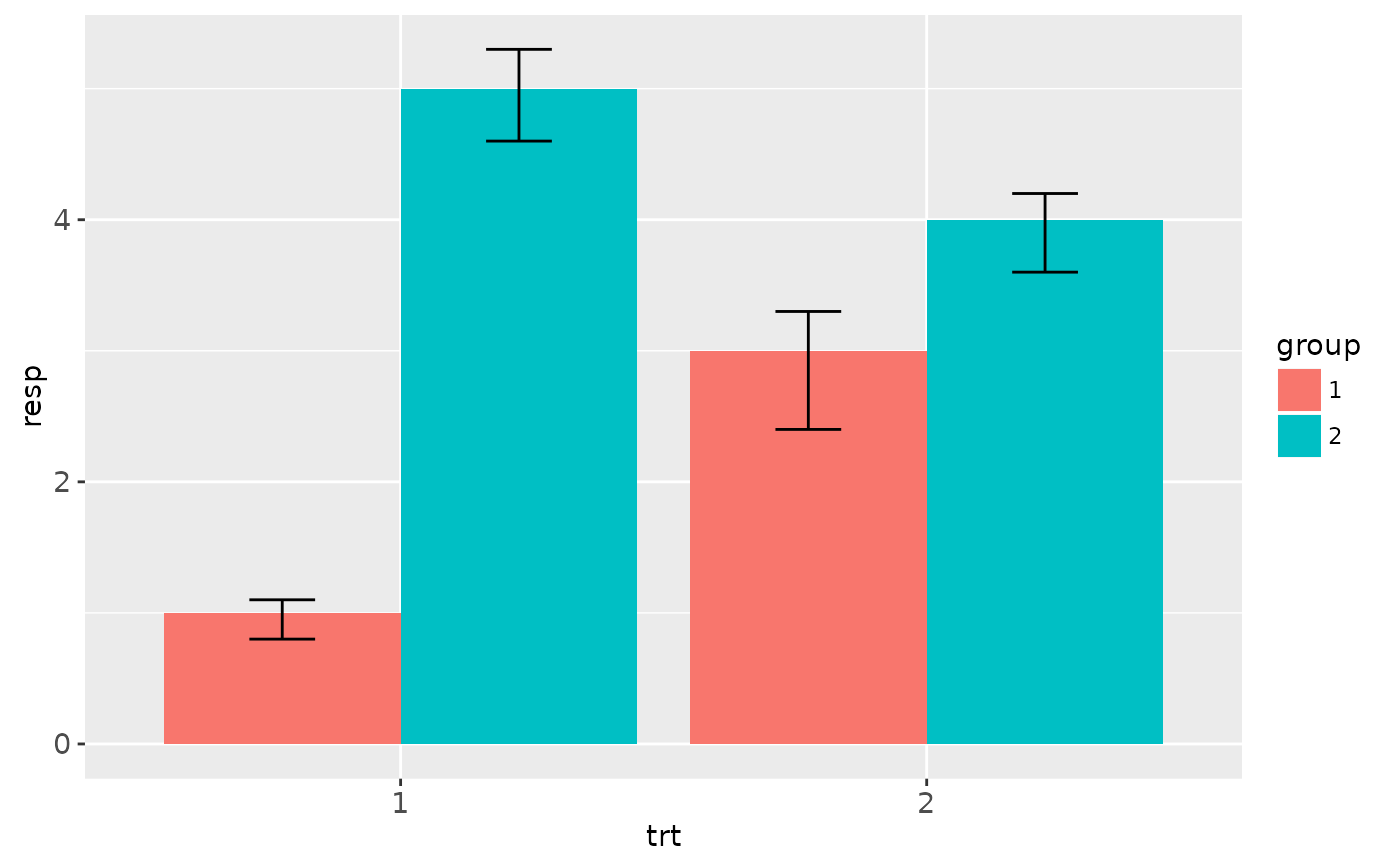Vertical intervals: lines, crossbars & errorbars.
Source:R/geom-crossbar.r, R/geom-errorbar.r, R/geom-linerange.r, and 1 more
geom_linerange.RdVarious ways of representing a vertical interval defined by x,
ymin and ymax.
Usage
geom_crossbar(
mapping = NULL,
data = NULL,
stat = "identity",
position = "identity",
...,
fatten = 2.5,
na.rm = FALSE,
show.legend = NA,
inherit.aes = TRUE
)
geom_errorbar(
mapping = NULL,
data = NULL,
stat = "identity",
position = "identity",
...,
na.rm = FALSE,
show.legend = NA,
inherit.aes = TRUE
)
geom_linerange(
mapping = NULL,
data = NULL,
stat = "identity",
position = "identity",
...,
na.rm = FALSE,
show.legend = NA,
inherit.aes = TRUE
)
geom_pointrange(
mapping = NULL,
data = NULL,
stat = "identity",
position = "identity",
...,
fatten = 4,
na.rm = FALSE,
show.legend = NA,
inherit.aes = TRUE
)Arguments
- mapping
Set of aesthetic mappings created by
aesoraes_. If specified andinherit.aes = TRUE(the default), it is combined with the default mapping at the top level of the plot. You must supplymappingif there is no plot mapping.- data
The data to be displayed in this layer. There are three options:
If
NULL, the default, the data is inherited from the plot data as specified in the call toggplot.A
data.frame, or other object, will override the plot data. All objects will be fortified to produce a data frame. Seefortifyfor which variables will be created.A
functionwill be called with a single argument, the plot data. The return value must be adata.frame., and will be used as the layer data.- stat
The statistical transformation to use on the data for this layer, as a string.
- position
Position adjustment, either as a string, or the result of a call to a position adjustment function.
- ...
other arguments passed on to
layer. These are often aesthetics, used to set an aesthetic to a fixed value, likecolor = "red"orsize = 3. They may also be parameters to the paired geom/stat.- fatten
A multiplicative factor used to increase the size of the middle bar in
geom_crossbar()and the middle point ingeom_pointrange().- na.rm
If
FALSE(the default), removes missing values with a warning. IfTRUEsilently removes missing values.- show.legend
logical. Should this layer be included in the legends?
NA, the default, includes if any aesthetics are mapped.FALSEnever includes, andTRUEalways includes.- inherit.aes
If
FALSE, overrides the default aesthetics, rather than combining with them. This is most useful for helper functions that define both data and aesthetics and shouldn't inherit behaviour from the default plot specification, e.g.borders.
Aesthetics
geom_linerange understands the following aesthetics (required aesthetics are in bold):
x
ymax
ymin
alpha
colour
linetype
size
See also
stat_summary for examples of these guys in use,
geom_smooth for continuous analog
Examples
#' # Create a simple example dataset
df <- data.frame(
trt = factor(c(1, 1, 2, 2)),
resp = c(1, 5, 3, 4),
group = factor(c(1, 2, 1, 2)),
upper = c(1.1, 5.3, 3.3, 4.2),
lower = c(0.8, 4.6, 2.4, 3.6)
)
p <- ggplot(df, aes(trt, resp, colour = group))
p + geom_linerange(aes(ymin = lower, ymax = upper))
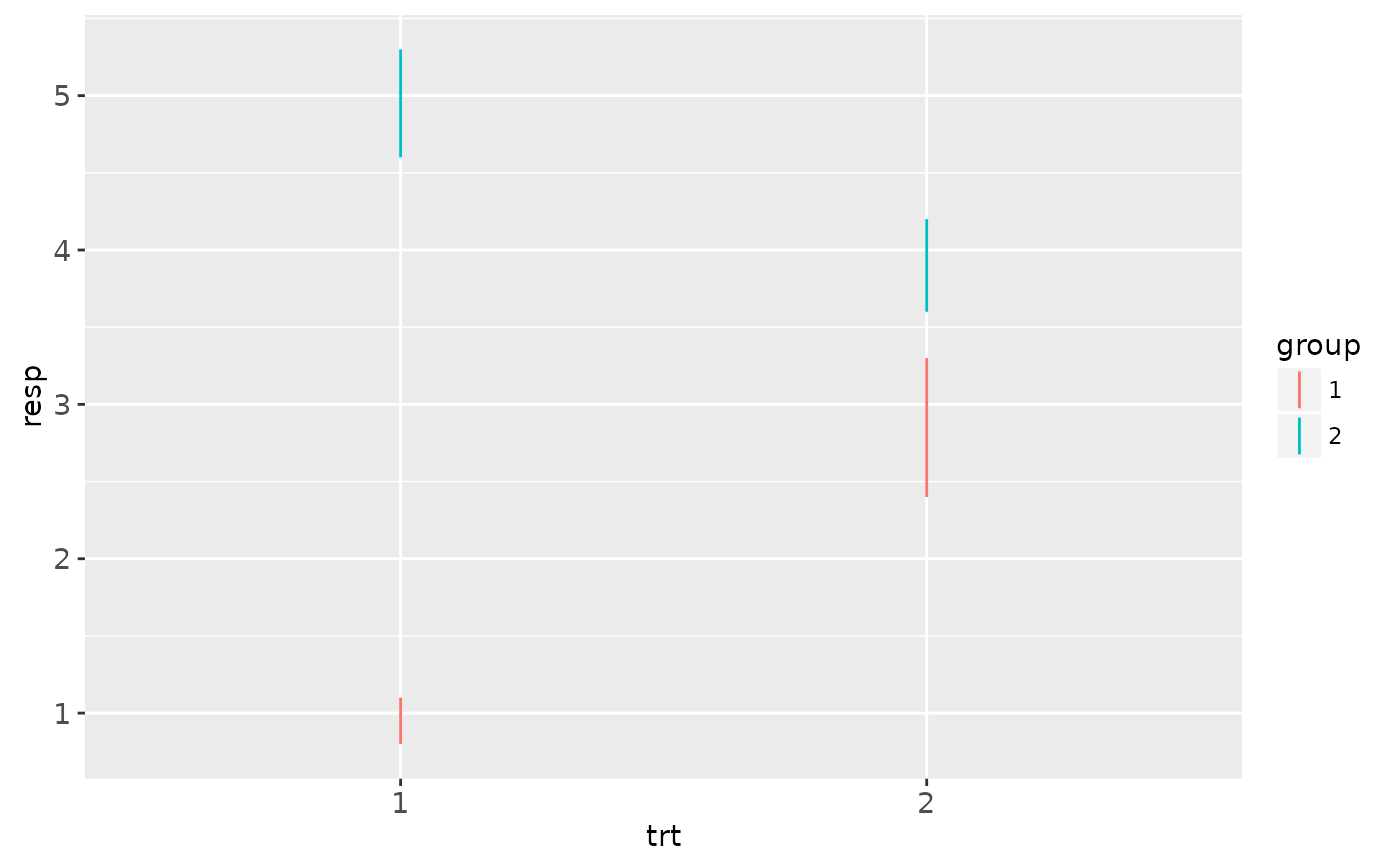 p + geom_pointrange(aes(ymin = lower, ymax = upper))
p + geom_pointrange(aes(ymin = lower, ymax = upper))
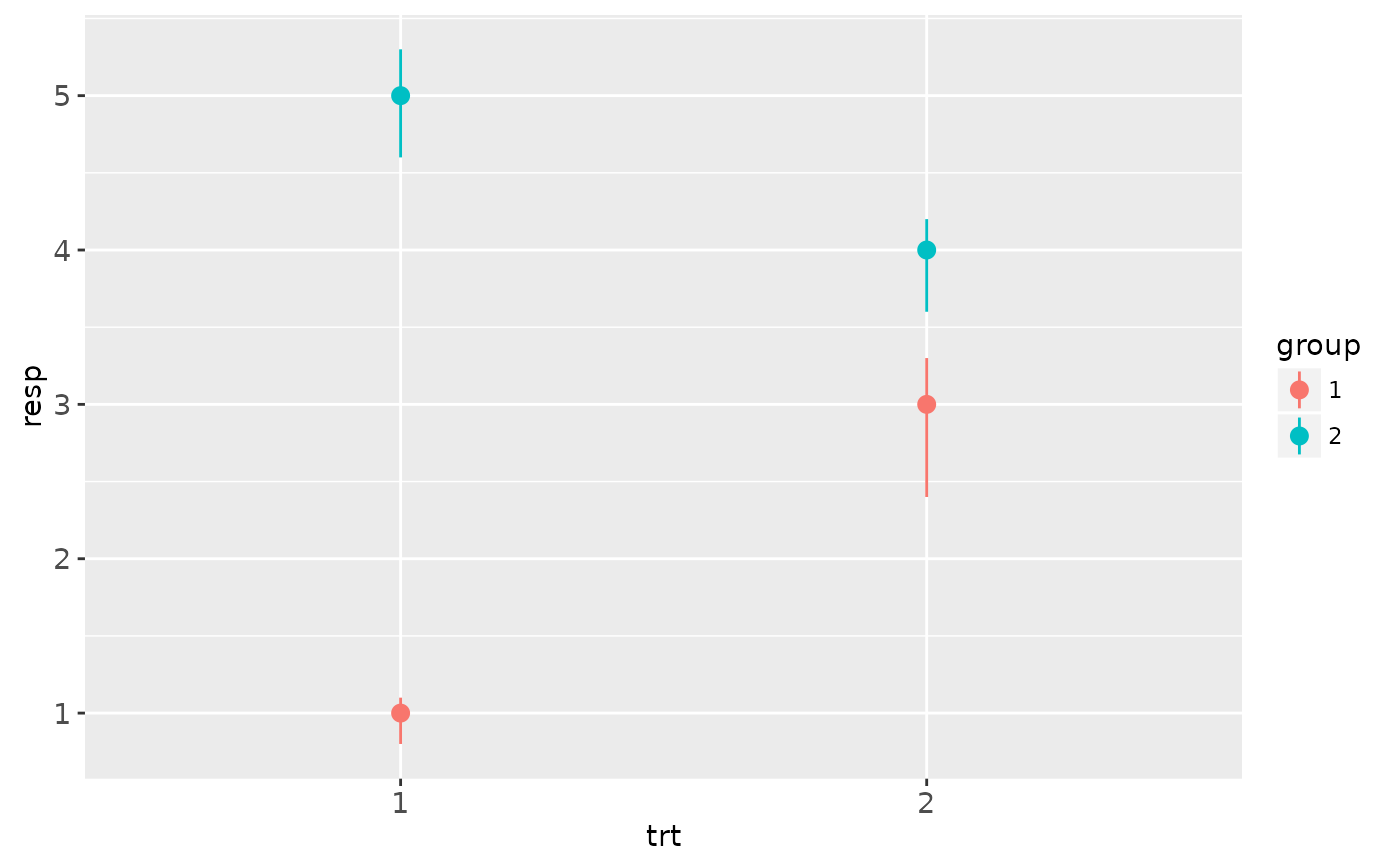 p + geom_crossbar(aes(ymin = lower, ymax = upper), width = 0.2)
p + geom_crossbar(aes(ymin = lower, ymax = upper), width = 0.2)
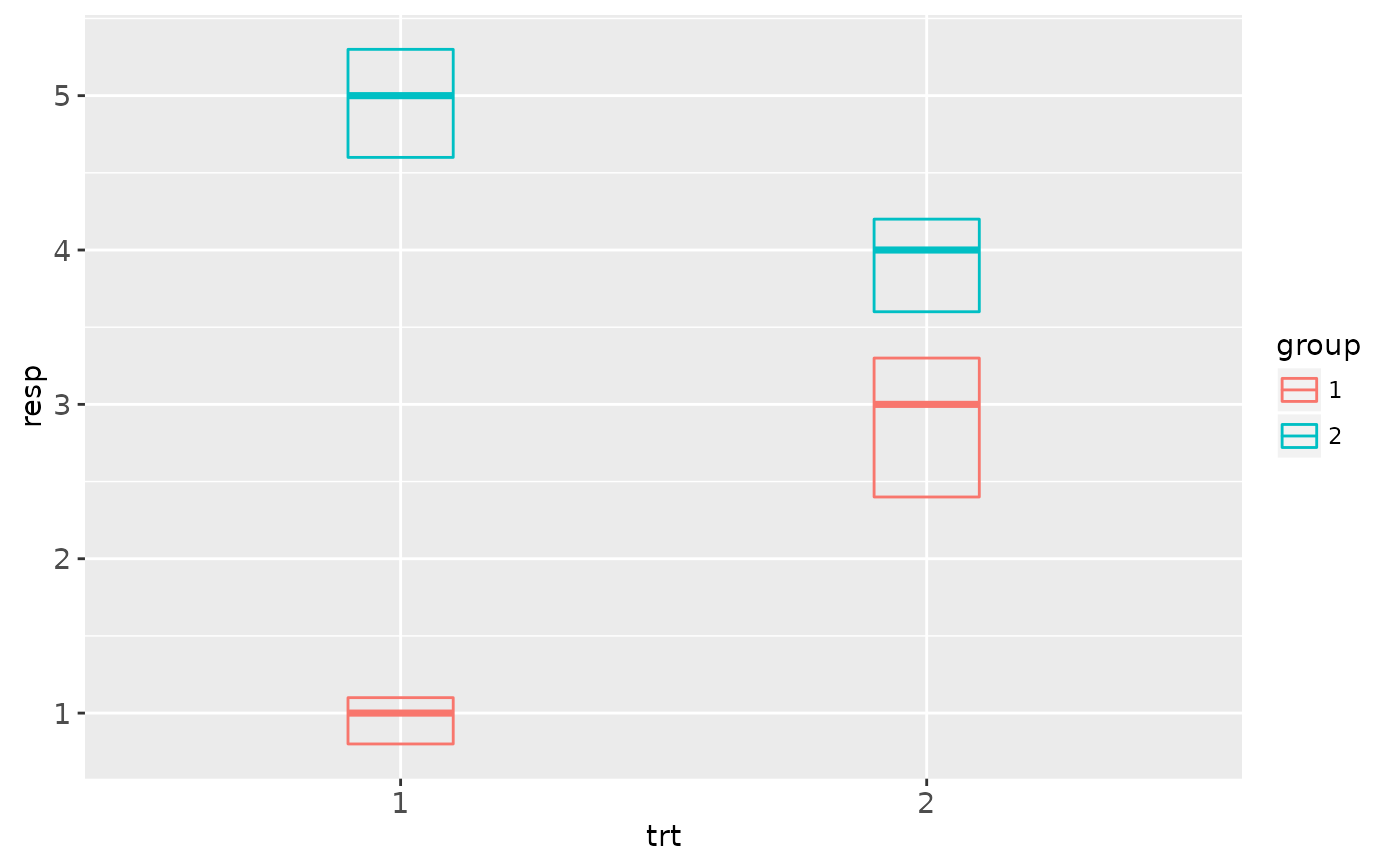 p + geom_errorbar(aes(ymin = lower, ymax = upper), width = 0.2)
p + geom_errorbar(aes(ymin = lower, ymax = upper), width = 0.2)
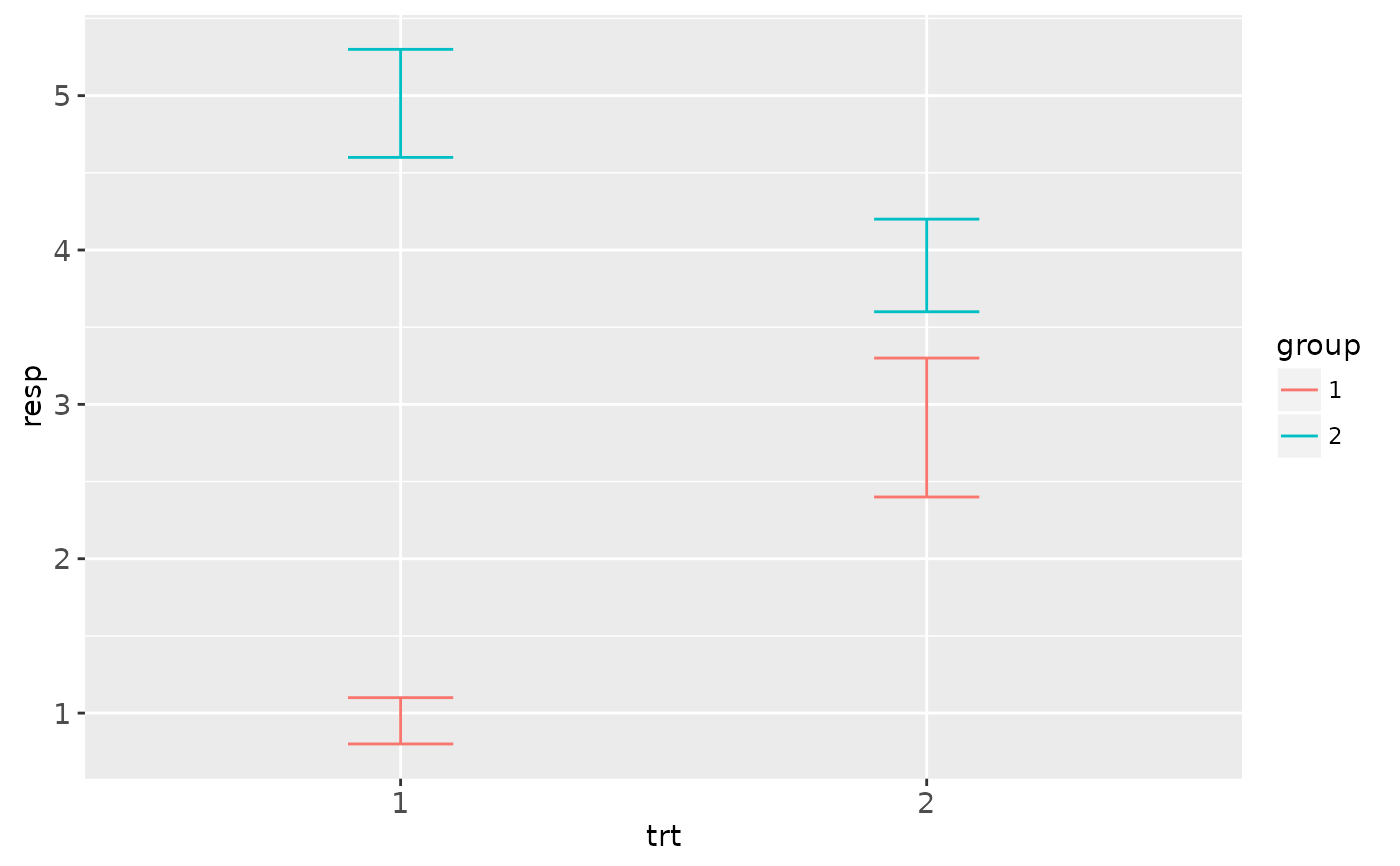 # Draw lines connecting group means
p +
geom_line(aes(group = group)) +
geom_errorbar(aes(ymin = lower, ymax = upper), width = 0.2)
# Draw lines connecting group means
p +
geom_line(aes(group = group)) +
geom_errorbar(aes(ymin = lower, ymax = upper), width = 0.2)
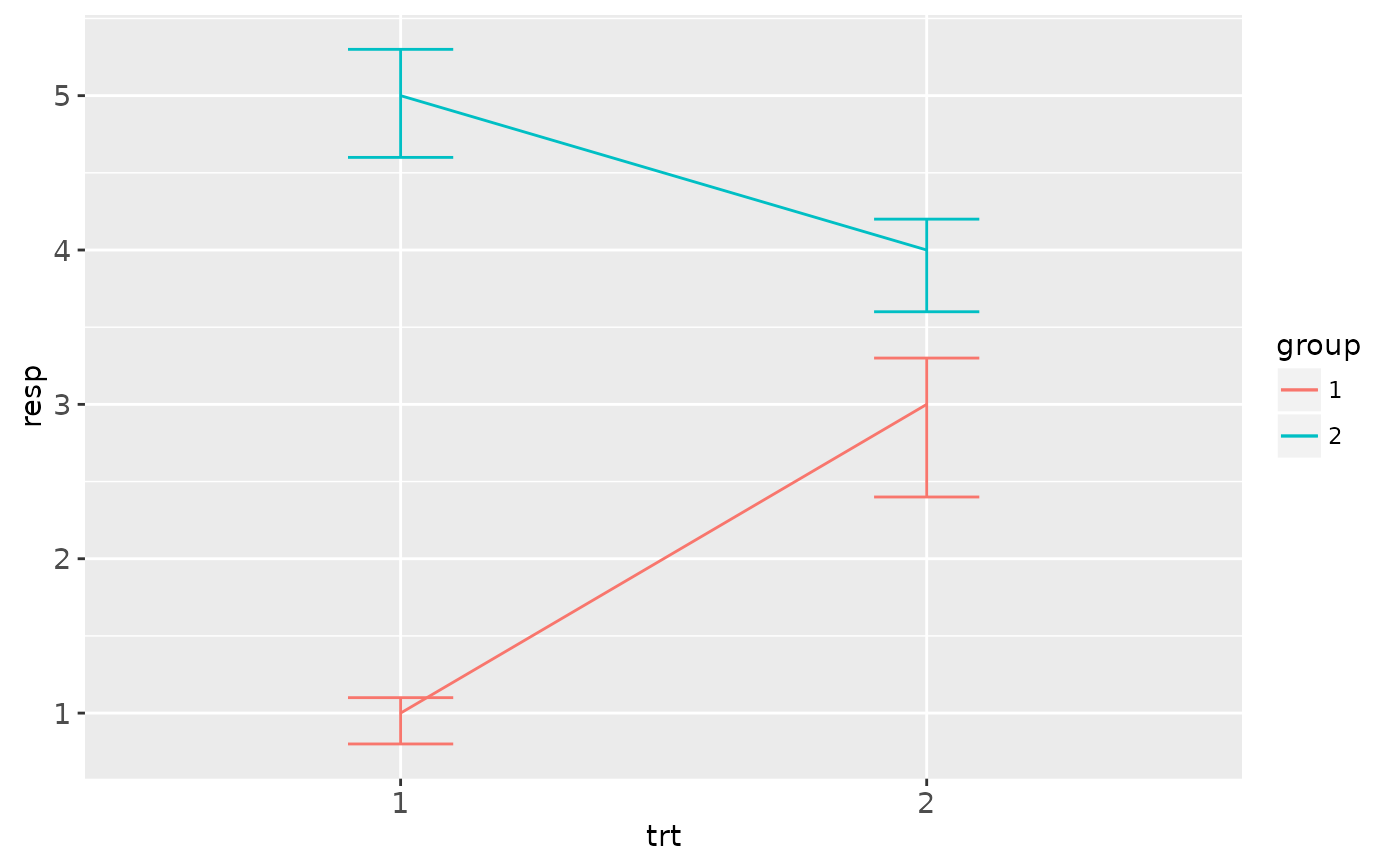 # If you want to dodge bars and errorbars, you need to manually
# specify the dodge width
p <- ggplot(df, aes(trt, resp, fill = group))
p +
geom_bar(position = "dodge", stat = "identity") +
geom_errorbar(aes(ymin = lower, ymax = upper), position = "dodge", width = 0.25)
# If you want to dodge bars and errorbars, you need to manually
# specify the dodge width
p <- ggplot(df, aes(trt, resp, fill = group))
p +
geom_bar(position = "dodge", stat = "identity") +
geom_errorbar(aes(ymin = lower, ymax = upper), position = "dodge", width = 0.25)
 # Because the bars and errorbars have different widths
# we need to specify how wide the objects we are dodging are
dodge <- position_dodge(width=0.9)
p +
geom_bar(position = dodge, stat = "identity") +
geom_errorbar(aes(ymin = lower, ymax = upper), position = dodge, width = 0.25)
# Because the bars and errorbars have different widths
# we need to specify how wide the objects we are dodging are
dodge <- position_dodge(width=0.9)
p +
geom_bar(position = dodge, stat = "identity") +
geom_errorbar(aes(ymin = lower, ymax = upper), position = dodge, width = 0.25)
